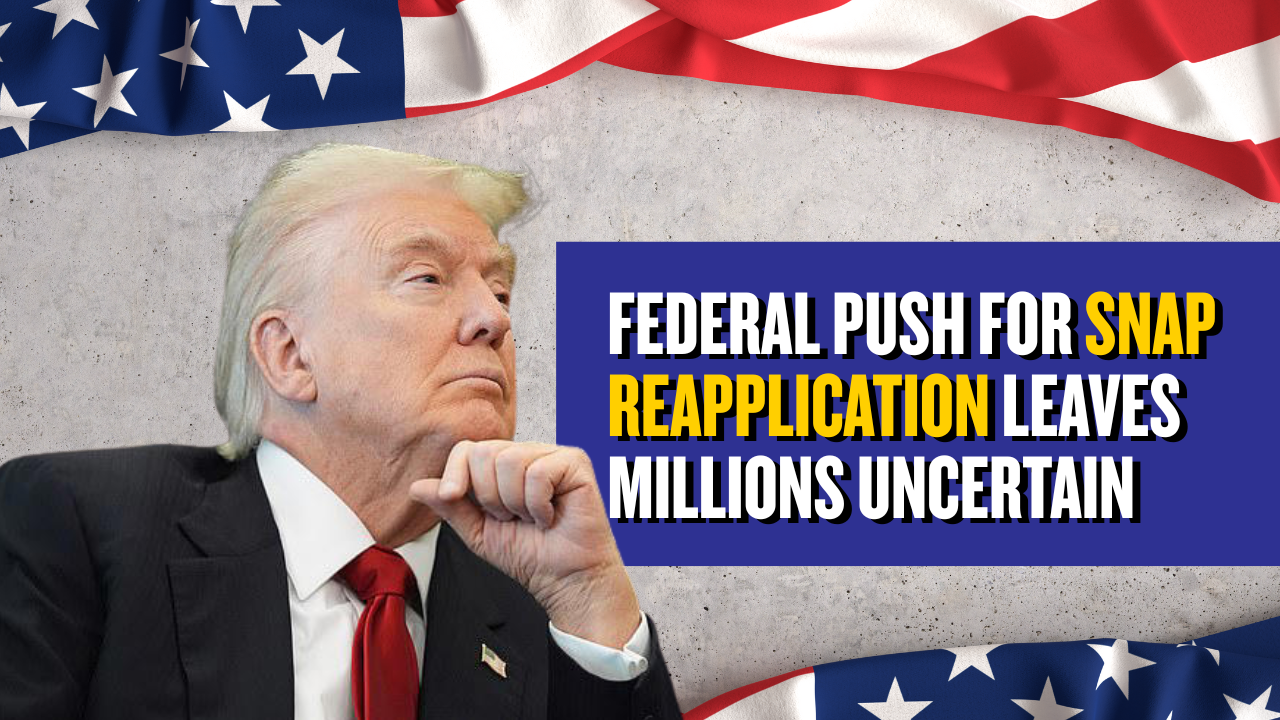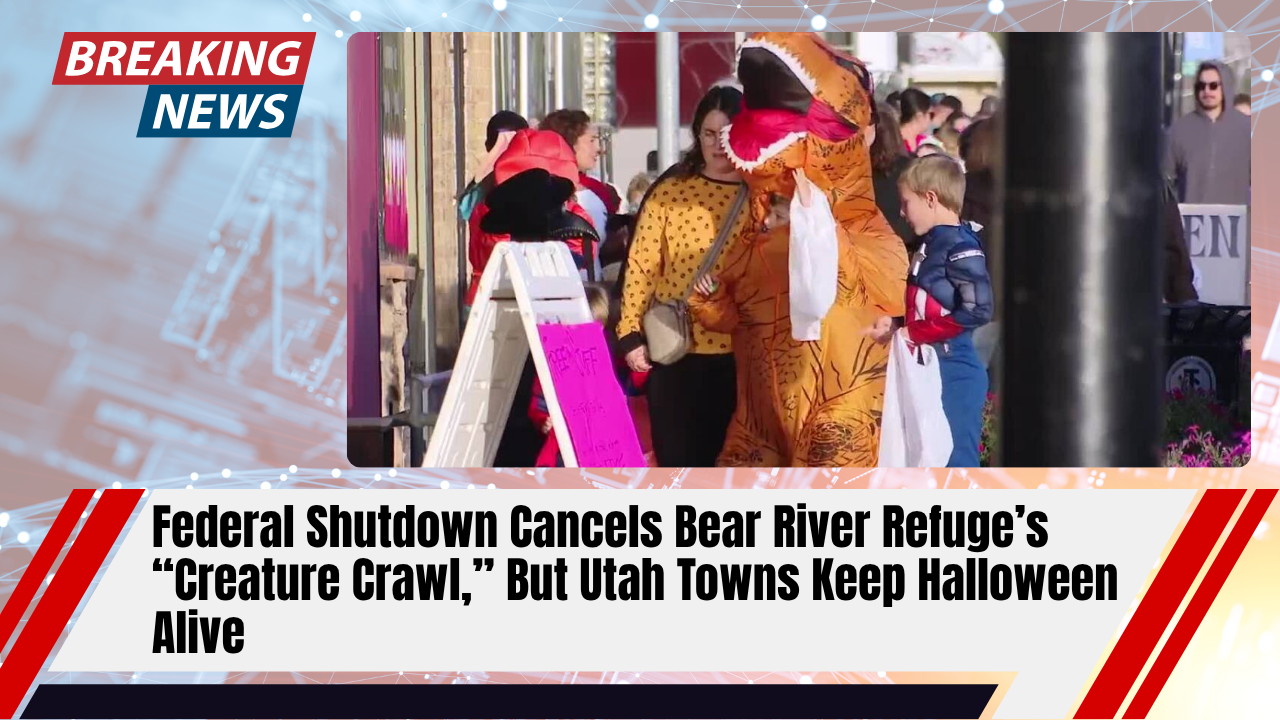Agriculture Secretary Brooke Rollins announced plans requiring all participants in the nation’s largest food assistance program to reapply for benefits, creating uncertainty for more than 40 million Americans who depend on nutritional support.
The announcement came during a media appearance on November 16, 2025, as Agriculture Secretary Brooke Rollins outlined the administration’s strategy to address what officials characterize as widespread program irregularities. The initiative affects participants in the Supplemental Nutrition Assistance Program, commonly known as food stamps.
Administrative Overhaul in Development
As of November 19, 2025, no official directive establishing the nationwide reapplication process has been issued through federal channels. Officials have not released specific implementation timelines or procedural guidelines for state agencies tasked with processing millions of applications simultaneously.
The announcement arrived just days after the federal government reopened following a record shutdown that had already strained food assistance programs nationwide. State administrators across the country report waiting for detailed instructions from federal authorities before preparing for what could represent one of the largest administrative undertakings in the program’s history.
The proposed measure aims to identify and remove ineligible recipients from program rolls. Federal officials cite concerns about deceased individuals remaining on benefit lists, duplicate enrollments across multiple states, and unauthorized benefit distribution.
Current Legislative Changes Already Taking Effect
Significant modifications to SNAP operations are already proceeding through implementation of the One Big Beautiful Bill Act, which Congress approved earlier in 2025. These changes introduce stricter work requirements for able-bodied adults and modify eligibility standards for certain immigrant populations.
States are incorporating these regulatory amendments during existing recertification cycles, which occur every six to 24 months depending on state policies and household circumstances. Unlike the proposed universal reapplication, these changes follow established administrative procedures without requiring simultaneous action from all participants.
Federal data analysis revealed 186,000 deceased individuals receiving benefits and 500,000 people receiving SNAP benefits in more than one state, according to information provided by 29 states that complied with data sharing requests. Twenty-one states declined to provide beneficiary information, with some jurisdictions filing legal challenges against the data collection effort.
Impact Projections and Benefit Reductions
Program administrators anticipate substantial numbers of households will experience benefit reductions or complete loss of assistance when assessed under new eligibility criteria. These changes will occur as each household reaches its regular recertification deadline, not through an accelerated review process.
Implementation of stricter regulations has already resulted in hundreds of thousands of participants losing benefits. Officials indicate approximately 700,000 individuals have been removed from program participation since January 2025, though specific reasons for removals have not been comprehensively detailed.
Essential Actions for Current Recipients
Beneficiaries should maintain updated case information through their state’s administration system while awaiting definitive guidance on reapplication procedures. The most critical step involves monitoring benefit status through official state channels rather than federal websites.
Each state operates its own SNAP management system with unique application portals and processing procedures. Recipients should access state-specific resources by searching for terms like “apply for SNAP” or “recertify SNAP” combined with their state name.
Major state portals include GetCalFresh for California, YourTexasBenefits for Texas, MyBenefits.NY for New York, ACCESS Florida for Florida, and the Department of Human Services website for Illinois. Contact information and application resources vary significantly by jurisdiction.
Documentation Requirements for Recertification
Preparing comprehensive documentation streamlines any required application or recertification process. Standard requirements typically include government-issued photo identification such as driver’s licenses or passports.
Social Security numbers for all household members represent another universal requirement, with provisions for explaining unavailable numbers. Proof of residence documentation, commonly utility bills or lease agreements, verifies address information.
Income verification proves essential for eligibility determination. Applicants must provide 30 days of income documentation, which may include employer pay stubs, official employment letters, or documentation of benefits from unemployment insurance or Supplemental Security Income. Complete household expense declarations must accompany income information.
Submission Methods and Processing Options
Multiple submission channels accommodate different applicant needs and preferences. Online applications through state websites generally provide the fastest processing, with systems often accepting document uploads via smartphone photographs.
Telephone applications remain available through state SNAP hotlines for individuals requiring verbal assistance or lacking internet access. In-person applications can be completed at local social services offices, which can be located through online searches for nearby SNAP offices.
Selected states offer mail-in applications or specialized mobile applications for benefit management. Some jurisdictions utilize apps allowing beneficiaries to manage recertification documents and track application status electronically.
Federal Oversight and State Compliance
The data collection initiative that preceded the reapplication announcement generated significant controversy. Federal authorities requested comprehensive beneficiary information including names, birth dates, Social Security numbers, and addresses for all participants over the previous five years.
Predominantly Republican-led states complied with these requests, while Democratic-led states including California, New York, Oregon, and Washington challenged the data demands through legal action. Colorado and North Carolina, despite Democratic leadership, provided requested information to federal authorities.
Program Background and Scope
SNAP represents the nation’s largest nutrition assistance initiative, serving approximately 42 million participants with annual federal expenditures exceeding $99 billion in fiscal year 2024. The program supplements grocery budgets for low-income families, enabling purchases of nutritious foods essential for health and wellbeing.
Federal regulations establish uniform eligibility requirements and benefit levels, while states handle daily operations including eligibility determinations, benefit calculations, and electronic benefit transfer card issuance. Benefits are distributed through EBT cards functioning similarly to debit cards at authorized retailers.
Uncertainty and Waiting Period
Beneficiary advocacy organizations express concern about the lack of detailed implementation plans and potential disruptions to food security for vulnerable populations. State administrators emphasize their need for clear federal guidance before mobilizing resources for mass reapplication processing.
Recipients should continue monitoring official state communications channels for updates on reapplication requirements. Until formal directives are issued with specific deadlines and procedures, standard recertification processes remain in effect according to existing schedules.
The coming weeks will likely provide greater clarity as federal and state agencies coordinate implementation strategies for this unprecedented administrative initiative.



